The first conversation you need to have is with yourself.
If your sales results are not where you want them to be the primary cause is likely to be internal rather than external. Confidence is critical, but all the confidence in the world without intrinsic motivation to perform will not enable you to break free of what I call the “Budget and Bill Paying Cycle”.
Most salespeople lack the motivation to perform in the top 13% because their goals are controlled by others. Their work rate and commitment to skill improvement are determined by what it takes to pay their bills and achieve their boss’s budget.
There are two major problems with this:
The first is that your boss did not define the budget by determining how much you needed to sell to live an amazing quality of life. They didn’t determine the budget by asking “What sales goal will enable Dean to earn enough to move into a better house, remove all his debt and take all the financial stress out of his family’s lives?” That was not the question he or she was asking when they set the budget. And for nearly every salesperson it is very unlikely that simply hitting budget is going to deliver a truly better quality of life for you and your family if you have one.
The second challenge with this is that it is very difficult to get motivated if the only thing you’re striving to do is pay the bills. Most of us are motivated up to the point the bills are paid but once the fear of not being able to that is gone, so is our motivation to do additional prospecting and make additional sales.
You must KNOW why it is important to go beyond the boss’s budget and bills. The more you connect personal goals that matter to you and those you care about to sales performance, the more likely it is you’ll do what it takes to move into the 13%. Remember that 13% of salespeople are taking home 91% of the rewards and commissions above salary. And the primary reason they outperform is they know WHY they MUST achieve beyond the budget and the bills.
As I like to point out, “If you don’t know, you won’t grow!” So, every sales kick off should start with salespeople reflecting on their personal motivation for sales growth beyond the budget.
Once we’ve made that link, it’s important to reflect on where the growth is most likely to come from. A great tool for considering this is the Ansoff Matrix considering the 4 key sources of sales revenue.
1. Selling the same product to existing customers
Source 1 is selling more of the same to existing customers. Salespeople should consider how much revenue is likely to achieved simply by retaining existing customers and if this is a large percentage of the desired annual revenue then the amount of retention activity in your sales growth plan should reflect this.
2. Selling new products to existing customers
Source 2 is all about meeting more of your current customer’s needs. As an example, if you’re a mortgage broker that does not take care of customer’s personal loans, insurance and equipment finance this could represent a great opportunity for growth in both your customer relationships and your sales. If this is a big opportunity then spending time with existing customers, more depth in your needs analysis and systematically engaging all your existing customers will be an important part of your strategy.
3. Selling the same products to new customers
Source 3 is all about new business prospecting. The research suggests that the average salesperson is only having 3-4 meaningful new prospect conversations per month and only bringing on 4 meaningful new customers a year! Those are scarily bad conversion rates, but this also suggests that most salespeople need to be prospecting more. And before you start blaming marketing, I want to remind you that if your ‘Why’ is big enough, you’ll take personal responsibility for the number of prospective customers you’re speaking to each week. If this is where you need a big percentage of your sales growth to come from, then prospecting activity and a disciplined approach to getting it done needs to be a big part of your strategy.
4. Selling new products to new customers
For completeness, source 4 of sales growth is selling new or non-core products and services to new customers. Unless you’re about to release a new product into a completely new market, this is unlikely to be an important source of sales growth. If it is, new business prospecting will be a major part of your growth strategy.
Having determined where the growth required to achieve your goals will come from, it’s time to do a little bit of thinking around what activity is most likely to enable you to achieve them as efficiently and effectively as possible.
There are a multitude of ways to retain and grow existing customers and the same goes for securing new customers. Before you charge off into a frenzy of activity, it’s important to consider which of those is most likely to work best for you, your target market and the solution you sell.





























